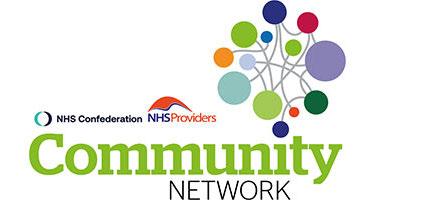How digital technology is benefiting community health services

In this blog series from the Community Network, leaders from across the community sector and beyond will be outlining how they are helping the health and care system respond to the big challenges ahead.
While many community providers are using digital technology, the digital agenda needs to be supported nationally and at all system levels. Andrew Ridley writes on the recommendations made in a recent Community Network report on how to help level up the use of digital tools in community services across the country.
There are significant opportunities for community health services to deliver better care for the public by maximising the use of digital technology, including remote monitoring, virtual consultations and self-management tools. Spurred on by the need to work differently during the pandemic, community providers are already achieving major improvements for patients in this space.
With a mobile workforce already comfortable with operating remotely, they perhaps have most to gain from a fast-evolving digital world that offers significant potential to change the nature of provision. Their flexible, community-based model of service provision is well suited to testing small-scale innovations in digital.
Digital uptake
Throughout the pandemic, the progress of community providers towards the digital transformation envisaged in the NHS Long Term Plan has accelerated.
For example, at my trust, Central London Community Health NHS Trust implemented virtual consulting and meetings at pace where it was appropriate. Indeed, core aspects like remote monitoring and electronic integrated records are increasingly taken for granted and we have moved on to tools like introducing patient-led e-booking that interacts with clinical systems, wearable tech for Parkinson’s patients, and more.
Tameside and Glossop Integrated Care NHS Foundation Trust’s digital health service rapidly expanded its size and scope and this has helped it to treat older people in care homes in collaboration with partner organisations. It uses remote monitoring, shared patient records, downloadable prescriptions and other tools which have led to a reduction in emergency attendances and admissions as well as fewer GP, ambulance and community team callouts to care homes.
Digitisation must be a national priority
Nationally there is a wide variation in how much progress different providers are making
Community providers, integrated care systems and national NHS bodies are keen to build on this momentum. Yet while digital transformation will make a difference in the face of the NHS’s post-pandemic recovery and tackling the backlog, it has received little in the way of national prioritisation or targeted funding.
This means that nationally there is a wide variation in how much progress different providers are making. There is a clear need for some of the spending announced by the government to filter down. Where investment exists, access to it needs to be improved too.
Community interest companies, which are a key part of the NHS’s community services provision, are often frozen out of national funding pots and only providers are able to self-fund digital programmes. Similarly, the task of making systems interoperable – where information and records can be more easily, safely and usefully shared between healthcare providers – risks stalling without access to investment.
Recommendations for levelling up
It is not just about money, however. A new report by the Community Network, which is hosted by the NHS Confederation and NHS Providers, makes a series of recommendations for national policymakers, ICSs and community providers which can help to level up the use of digital tools in community services across the country.
All parts of the system have a duty to promote the digital agenda at all levels, and to integrate and embed it within all parts of organisations and systems
Among them is the need for clarity on the leadership and prioritisation of the digital agenda at regional and national levels within the NHS. Following the recent announcement about NHS Digital and NHSX becoming part of NHS England and NHS Improvement, it will be important for the new national structure to support providers.
Both the national bodies, ICSs and community providers themselves will benefit from sharing more examples of best practice, while national bodies can provide support to enable true interoperability.
Perhaps most importantly, all parts of the system have a duty to promote the digital agenda at all levels, and to integrate and embed it within all parts of organisations and systems. A key part of the solution is cultural.
Community providers are enthusiastic about digital transformation and committed to maintaining and progressing digital improvements that have taken place during the pandemic. If they are going to do so, they will need widespread buy-in, and that includes support and improving access to funding from the national NHS bodies.
Andrew Ridley is chair of the Community Network, which is hosted by the NHS Confederation and NHS Providers, and chief executive of Central London Community Healthcare NHS Trust. You can follow Andrew on Twitter @CLCHAndrew
This blog was first published in the HSJ.




